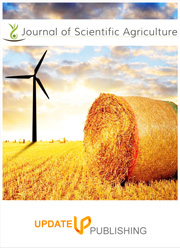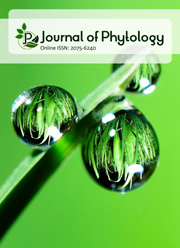Efficacy and Economics of Herbicidal Weed Management in Monsoon Rice of Bangladesh
Weed Management in Monsoon Rice of Bangladesh
DOI:
https://doi.org/10.25081/jsa.2017.v1.834Keywords:
Weed control; late summer rice; herbicides, BCRAbstract
Weed management is a challenging task in sustainable rice production. Physical and cultural methods of weed control are laborious and expensive, whereas chemical control is cheaper and less time consuming despite of some detrimental effect on environment with its inappropriate application. Considering these points, an experiment was conducted at the Agronomy Field Laboratory of Bangladesh Agricultural University, Mymensingh, Bangladesh during July–December 2015 to find out appropriate weed management practices for inbred and hybrid rice. The experiment comprised of four rice varieties (two inbred; BRRI dhan49 and Binadhan-7, and two hybrids; Dhani gold and Agrodhan-12); and eight herbicidal weed control treatments (season-long weedy or weed free, Pretilachlor fb Penoxsolum or 2,4-D dimethyl amine, Pendimethalin fb Penoxsolum or 2,4-D dimethyl amine, Pretilachlor or Pendimethalin fb one-time hand weeding). Eleven weed species belonging to five families were observed in the experimental plots. The highest weed density and dry weight were found in season-long weedy treatment and the lowest one was found in Pretilachlor fb one-time hand weeding. The highest above ground crop biomass (9.7 t ha-1) and harvest index (46.3%) were obtained from the hybrid variety Agrodhan-12 and the lowest biomass (8.3 t ha-1) was obtained from the inbred variety Binadhan-7. Season long weed free condition resulted the highest above ground crop biomass (10.9 t ha-1), harvest index (48.7%), highest yield increase over control (213.8), weed control efficiency (100%) and gross return (BDT 141480 ha-1) and the lowest values for all those parameters were obtained from season-long weedy treatment. Season-long weed free treatment combined with Pretilachlor or Pendimethalin fb one-time hand weeding showed the best performance in reducing weed density and increasing above ground crop biomass, but gross return was higher because of high labour wages in these treatments. The highest BCR (2.5) was observed in Pretilachlor fb Penoxsolum. Therefore from economic view point Pretilachlor fb Penoxsolum is the best combination. But from sustainability view point Pretilachlor or Pendimethalin along with one-time hand weeding may be recommended for effective weed management in inbred and hybrid rice during monsoon season.



 .
.